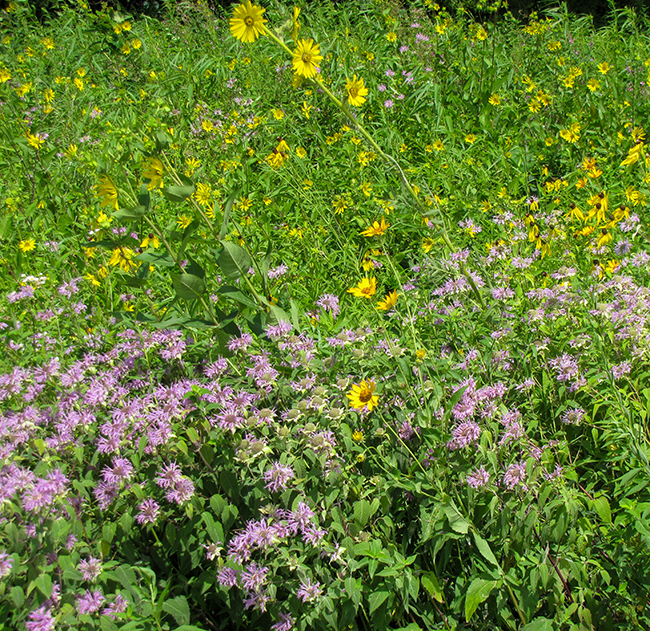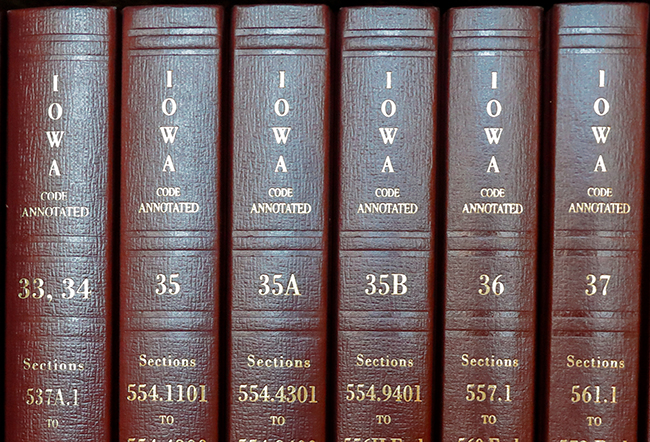Landowner Education
Landowner Education thompsbb
Resisting outside pressure to apply more herbicides might require educating landowners—or even county or city elected officials—on why spraying would be inappropriate. The following points can be helpful when talking to someone whose weed control philosophy is based primarily on experience with row crops and lawns.
- Roadside weed control bears no resemblance to row crop weed control. Corn and soybeans are annual species maintained in bare soil, a practice that invites weeds and requires continuous cultivation and herbicide use. On the other hand, native seed mixes designed for roadsides create diverse stands of perennial vegetation that prevent weeds by occupying all available space. Overuse of herbicides works against this method of weed control.
- Native prairie grasses and wildflowers may be tall and appear unkempt, but they are the plant species most adapted to Iowa’s climate and growing conditions. Their extremely deep roots enable them to survive environmental stressors, and their unique metabolism allows them to grow tall and thrive during long, hot summers. Because of these characteristics, native plants outcompete weeds.
- Broadleaf wildflowers included in native seed mixes are part of the weed control plan. They occupy a niche in the plant community otherwise occupied by weeds and are not a threat to agriculture.
- A pure stand of any grass is an unnatural condition that is sustainable only through the use of herbicides. Diverse prairie plantings are better able to outcompete weeds and require fewer herbicides than a stand of one species.
- Overuse of herbicides in any roadside creates openings for weeds by weakening grasses and eliminating beneficial broadleaf wildflower species.
Landowner Permits and Letters
According to Iowa Code Section 317.13, counties must require individuals to obtain work permits for the burning, mowing, or spraying of roadsides included in IRVM plans. These activities must be consistent with the county’s adopted IRVM plan. For a sample of what these permit applications look like, see Appendix 7A: Sample Landowner Work Permit.

Counties may also choose to create permits or request forms for individuals to collect seeds, plant native seed or plants, or manage the invasive species in roadsides bordering their property. Landowners who do not want the roadside vegetation adjacent to their property sprayed with chemicals make up the bulk of these permit applications. For a sample of what these request forms look like, see Appendix 7B: No Spray Request.
Investigating Suspected Landowner Spraying Encroachment
For roadside sites that you suspect have been sprayed, you can contact the Pesticide Bureau at the Iowa Department of Agriculture and Land Stewardship (IDALS). The bureau will send a pesticide inspector who will investigate to determine whether it was a result of direct spraying or drifting. The inspector will issue a report but cannot pursue legal remediation on your behalf; that is in the purview of the county attorney. If you want to pursue monetary damages for a violation of Iowa Code, consult with your county attorney, who can notify the responsible landowner. If the spraying was inadvertent, the landowner or farm operator may have liability insurance that can result in a settlement with the county attorney in 9–12 months. Word gets around, and enforcing Iowa Code related to roadside vegetation sends a message to landowners that there will be consequences for people who spray roadside vegetation.
The Iowa State Association of Counties General Counsel (515-369-7014) is a good resource for questions regarding sections of Iowa Code that apply to roadside vegetation management.